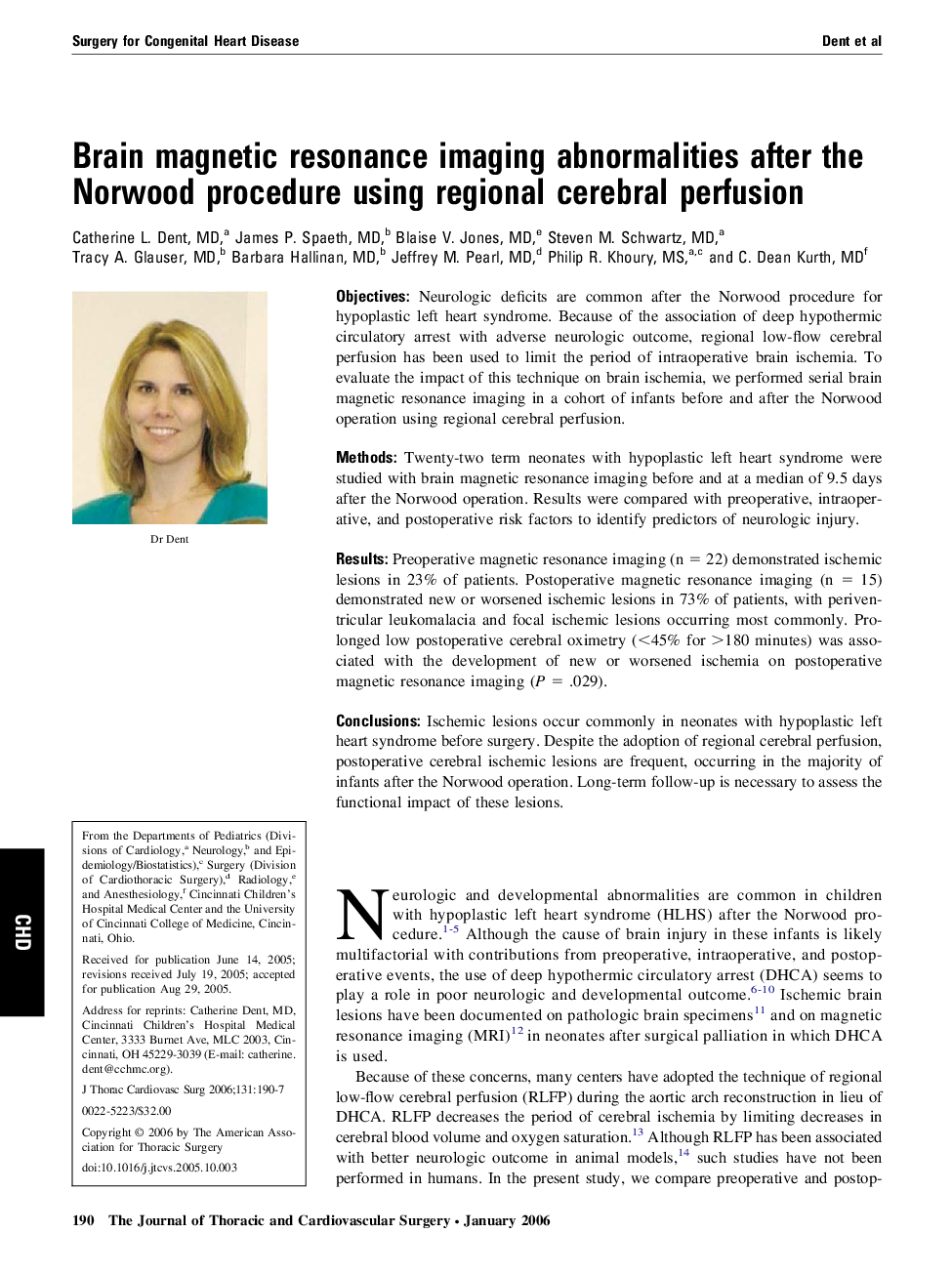| Article ID | Journal | Published Year | Pages | File Type |
|---|---|---|---|---|
| 2987223 | The Journal of Thoracic and Cardiovascular Surgery | 2006 | 8 Pages |
ObjectivesNeurologic deficits are common after the Norwood procedure for hypoplastic left heart syndrome. Because of the association of deep hypothermic circulatory arrest with adverse neurologic outcome, regional low-flow cerebral perfusion has been used to limit the period of intraoperative brain ischemia. To evaluate the impact of this technique on brain ischemia, we performed serial brain magnetic resonance imaging in a cohort of infants before and after the Norwood operation using regional cerebral perfusion.MethodsTwenty-two term neonates with hypoplastic left heart syndrome were studied with brain magnetic resonance imaging before and at a median of 9.5 days after the Norwood operation. Results were compared with preoperative, intraoperative, and postoperative risk factors to identify predictors of neurologic injury.ResultsPreoperative magnetic resonance imaging (n = 22) demonstrated ischemic lesions in 23% of patients. Postoperative magnetic resonance imaging (n = 15) demonstrated new or worsened ischemic lesions in 73% of patients, with periventricular leukomalacia and focal ischemic lesions occurring most commonly. Prolonged low postoperative cerebral oximetry (<45% for >180 minutes) was associated with the development of new or worsened ischemia on postoperative magnetic resonance imaging (P = .029).ConclusionsIschemic lesions occur commonly in neonates with hypoplastic left heart syndrome before surgery. Despite the adoption of regional cerebral perfusion, postoperative cerebral ischemic lesions are frequent, occurring in the majority of infants after the Norwood operation. Long-term follow-up is necessary to assess the functional impact of these lesions.
